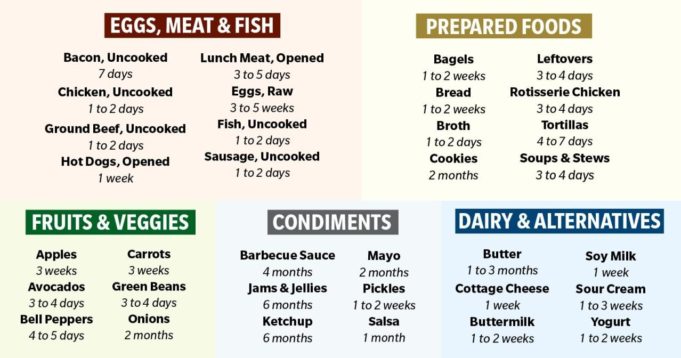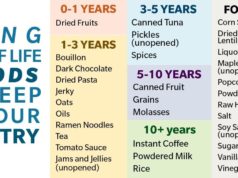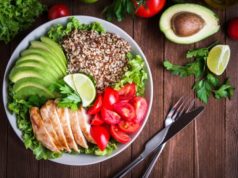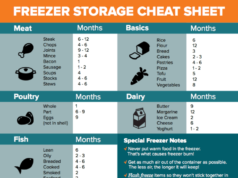How long do foods last? It’s a question we all ask ourselves at some point, especially when faced with a fridge full of questionable leftovers or a pantry overflowing with forgotten staples. Understanding the factors that affect food shelf life is crucial for ensuring food safety and reducing waste. This guide explores the basics of food storage, from understanding expiration dates to implementing proper handling practices. We’ll delve into the science behind food spoilage and offer practical tips for maximizing the freshness and longevity of your groceries.
From the moment we bring food into our homes, a silent battle begins. Microorganisms, oxidation, and time itself conspire to degrade our precious provisions. But armed with knowledge, we can outsmart these adversaries and enjoy delicious, safe food for longer. We’ll unravel the mysteries of “best by” and “use by” dates, discover the secrets of proper refrigeration and freezing, and explore innovative storage solutions that keep our food fresher for longer.
Food Storage Basics: How Long Do Foods Last
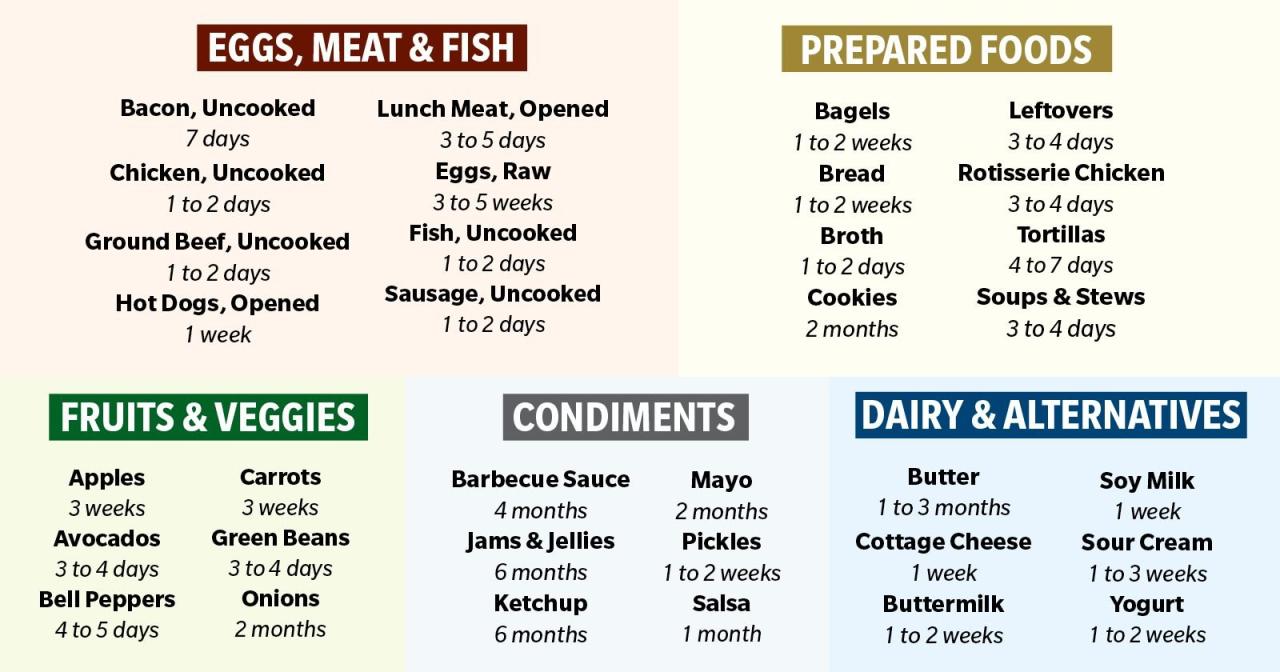
Knowing how long foods last is essential for preventing foodborne illness and reducing food waste. Understanding the factors that influence food shelf life and the different methods of food preservation can help you make informed decisions about storing and using your food safely and efficiently.
Factors Influencing Food Shelf Life
Food shelf life is influenced by several factors, including temperature, humidity, and packaging.
- Temperature: Temperature plays a crucial role in food spoilage. Most bacteria thrive in the “danger zone,” between 40°F and 140°F (4°C and 60°C). Refrigeration and freezing help slow down bacterial growth and extend shelf life.
- Humidity: Humidity refers to the amount of moisture in the air. High humidity can promote mold growth on foods, especially those with high moisture content, such as bread and fruits. Low humidity can cause foods to dry out and become stale.
- Packaging: Packaging can also impact food shelf life. Proper packaging helps to protect food from contamination, moisture loss, and oxygen exposure. For example, vacuum-sealed packaging helps to extend the shelf life of meat and fish by removing oxygen and reducing bacterial growth.
Food Preservation Methods
Food preservation methods are techniques used to extend the shelf life of food by inhibiting or slowing down the growth of microorganisms that cause spoilage. Some common methods include:
- Refrigeration: Refrigeration is one of the most common methods of food preservation. It slows down bacterial growth by lowering the temperature to a point where most bacteria cannot thrive.
- Freezing: Freezing is another effective method of food preservation. It lowers the temperature below the freezing point of water, effectively stopping the growth of most bacteria and enzymes that cause spoilage.
- Canning: Canning involves heating food in airtight containers to kill bacteria and seal them to prevent further contamination.
- Drying: Drying removes moisture from food, making it unsuitable for bacterial growth. This method is commonly used for fruits, vegetables, and meats.
Recommended Storage Conditions
| Food Group | Recommended Storage Conditions |
|---|---|
| Fruits | Refrigerate most fruits, except bananas, avocados, and citrus fruits, which can be stored at room temperature. |
| Vegetables | Refrigerate most vegetables, except onions, potatoes, and garlic, which can be stored at room temperature. |
| Meats | Refrigerate fresh meat and poultry at 40°F (4°C) or below. Freeze meat and poultry for longer storage. |
| Dairy Products | Refrigerate milk, cheese, yogurt, and other dairy products at 40°F (4°C) or below. |
| Grains | Store grains in airtight containers in a cool, dry place. |
Food Expiration Dates
Food expiration dates are a common sight on packaged food items, but understanding their meaning and implications can be confusing. These dates are intended to provide guidance on the quality and safety of food, but they don’t always tell the whole story.
Understanding Expiration Date Terminology
Food labels often feature two types of expiration dates: “best by” and “use by.” While both are related to food quality, they have distinct meanings.
- Best By: This date indicates the manufacturer’s recommended time frame for optimal quality and flavor. After this date, the food may still be safe to consume, but its taste, texture, or appearance might be compromised.
- Use By: This date represents the manufacturer’s recommendation for the maximum time frame to consume the food while ensuring safety. After this date, the food may pose a health risk due to potential spoilage or bacterial growth.
Factors Contributing to Food Spoilage
Food spoilage is a natural process that occurs due to various factors, including:
- Bacterial Growth: Microorganisms like bacteria thrive in warm, moist environments, and can rapidly multiply in food, leading to spoilage and potential health risks.
- Oxidation: Exposure to oxygen can cause fats and oils in food to become rancid, leading to changes in flavor, aroma, and appearance.
- Enzymatic Reactions: Natural enzymes present in food can continue to break down food components even after harvesting or processing, contributing to spoilage over time.
Foods Safe to Consume Past Expiration Dates
While some foods may be unsafe to consume after their expiration dates, others can still be enjoyed if properly stored. Factors like storage conditions and the type of food play a crucial role in determining its safety and quality.
- Hard Cheeses: Hard cheeses like cheddar, Parmesan, and Swiss can often be consumed well past their expiration dates, as long as they are stored properly in a refrigerator.
- Dried Goods: Dried beans, rice, and pasta can remain safe for consumption for extended periods, especially if stored in airtight containers in a cool, dry place.
- Canned Goods: Properly sealed canned goods can often last for several years, although their quality may decline over time.
Food Safety and Storage Practices
Food safety is paramount when it comes to enjoying your food. Improper handling and storage can lead to foodborne illnesses, causing discomfort and potential health complications. Understanding basic food safety principles and practicing good hygiene habits can significantly reduce the risk of food poisoning.
The Danger Zone for Bacterial Growth
The “danger zone” refers to the temperature range where bacteria multiply rapidly. This zone typically falls between 40°F (4°C) and 140°F (60°C). Keeping food outside this temperature range helps to inhibit bacterial growth.
- Cold Temperatures: Refrigerate perishable foods promptly after purchase or preparation to slow down bacterial growth.
- Hot Temperatures: Cook food thoroughly to kill harmful bacteria. Ensure the internal temperature reaches the recommended level for different types of food.
Safe Food Storage Practices
Proper food storage is crucial for maintaining food quality and safety.
- Separate Raw and Cooked Meats: Store raw meats on lower shelves in the refrigerator to prevent juices from dripping onto other foods. Use separate cutting boards and utensils for raw and cooked meats to avoid cross-contamination.
- Use Airtight Containers: Store food in airtight containers to prevent spoilage and cross-contamination. This helps to maintain freshness and prevent the transfer of odors and flavors.
- Avoid Cross-Contamination: Wash hands thoroughly with soap and water before and after handling food. Clean and sanitize surfaces, utensils, and cutting boards regularly. Avoid using the same utensils for raw and cooked food.
Storage Solutions for Different Foods
Knowing how to store food properly is essential for extending its shelf life, preventing spoilage, and ensuring food safety. Different foods require different storage conditions, so understanding the best practices for each type is crucial. This section will delve into various storage solutions for different food categories, including fresh produce, pantry staples, and leftovers.
Storage Solutions for Different Food Types, How long do foods last
Proper storage techniques can significantly impact the longevity and quality of your food. Here’s a table outlining the best storage methods for various food types:
| Food Type | Storage Method | Temperature | Duration |
|—|—|—|—|
| Fresh Produce (e.g., leafy greens, fruits) | Refrigerator crisper drawer | 40°F (4°C) | 3-7 days |
| Root Vegetables (e.g., potatoes, carrots) | Cool, dark, and dry place | 50-55°F (10-13°C) | 2-4 weeks |
| Onions and Garlic | Cool, dry, and well-ventilated place | 50-55°F (10-13°C) | 2-4 weeks |
| Herbs | Refrigerator in a sealed container or plastic bag | 40°F (4°C) | 1-2 weeks |
| Dairy Products (e.g., milk, yogurt, cheese) | Refrigerator | 40°F (4°C) | 7-14 days |
| Eggs | Refrigerator | 40°F (4°C) | 3-5 weeks |
| Meat and Poultry | Refrigerator | 40°F (4°C) | 3-5 days |
| Frozen Foods | Freezer | 0°F (-18°C) | 2-6 months |
| Dry Goods (e.g., grains, beans, pasta) | Cool, dry, and airtight container | Room temperature | 6-12 months |
| Canned Goods | Cool, dry, and dark place | Room temperature | 1-2 years |
Visual Guide to Proper Storage Techniques
A visual guide can be helpful in understanding the proper storage techniques for common foods. Here are some examples:
Storing Onions and Potatoes Separately:
Imagine a kitchen counter with two separate containers. One container, labeled “Onions,” holds a bunch of onions, while the other, labeled “Potatoes,” contains a bag of potatoes. This visual demonstrates the importance of storing these two vegetables separately, as their proximity can accelerate spoilage.
Storing Herbs:
Visualize a small glass jar with a tightly fitting lid. Inside the jar, there are fresh herbs like parsley or basil, arranged neatly and stored in the refrigerator. This illustration highlights the benefits of using airtight containers for storing herbs to preserve their freshness and flavor.
Storage Container Options
Different storage containers offer varying benefits and drawbacks. Here’s a breakdown of popular options:
Plastic Wrap:
* Benefits: Affordable, readily available, and suitable for quick storage.
* Drawbacks: Not airtight, can transfer flavors, and may not be suitable for long-term storage.
Reusable Containers:
* Benefits: Durable, reusable, airtight, and available in various sizes and shapes.
* Drawbacks: Can be bulky and may not be suitable for all food types.
Vacuum Sealers:
* Benefits: Excellent for long-term storage, removes air, prevents freezer burn, and helps preserve flavor and freshness.
* Drawbacks: Can be expensive, requires a dedicated machine, and may not be suitable for all food types.
“Choose the storage container that best suits the type of food you’re storing and the desired shelf life.”
Food Waste Reduction
Food waste is a significant global problem, contributing to environmental degradation, economic losses, and food insecurity. Reducing food waste is crucial for sustainability and responsible food consumption. By understanding the causes of food waste and adopting effective strategies, we can make a positive impact on our planet and our communities.
Common Causes of Food Waste in Households
Food waste in households is often attributed to a combination of factors, including:
- Overbuying: Purchasing more food than necessary can lead to spoilage, especially for perishable items.
- Improper Storage: Incorrect storage methods can shorten the shelf life of food, resulting in waste.
- Lack of Meal Planning: Without a plan, it’s easy to forget about food in the refrigerator or pantry, leading to spoilage.
- Unrealistic Expectations: Expecting perfect-looking produce or assuming that food will last longer than it actually does can contribute to waste.
- Portion Size: Serving sizes can be larger than needed, resulting in leftover food that might go to waste.
Strategies for Reducing Food Waste
Several strategies can help reduce food waste at home:
- Meal Planning: Create a weekly meal plan to ensure you only buy what you need and avoid impulse purchases.
- Use Leftovers Creatively: Transform leftovers into new dishes, such as soups, stews, or salads.
- First In, First Out (FIFO): Rotate your pantry and refrigerator stock, using older items first to prevent spoilage.
- Proper Storage: Store food correctly to extend its shelf life. For example, store fruits and vegetables in the crisper drawer, and keep meats and poultry in the coldest part of the refrigerator.
- Composting: Compost food scraps and yard waste to create nutrient-rich soil for your garden.
Apps and Resources for Food Waste Management
Several apps and resources can assist with food waste management:
- Too Good To Go: This app connects users with local businesses that offer discounted food nearing its sell-by date.
- Olio: This app allows users to share surplus food with their neighbors, preventing waste and promoting community engagement.
- Food Waste Reduction Toolkit: The EPA offers a comprehensive toolkit with resources, tips, and strategies for reducing food waste.
- Love Food Hate Waste: This website provides practical advice, recipes, and tips for reducing food waste in the kitchen.
Final Summary
By understanding the factors that affect food shelf life, implementing proper storage practices, and adopting mindful consumption habits, we can extend the life of our food, reduce waste, and enjoy delicious meals with confidence. So, let’s unlock the secrets of food longevity and make the most of our culinary treasures, one bite at a time.
Frequently Asked Questions
What is the “danger zone” for bacterial growth?
The “danger zone” for bacterial growth is between 40°F (4°C) and 140°F (60°C). Bacteria multiply rapidly within this temperature range, so it’s crucial to keep food out of this zone to prevent spoilage and foodborne illnesses.
Can I freeze all types of food?
While many foods can be frozen, some are better suited for freezing than others. Foods high in water content, like leafy greens and cucumbers, can become mushy when frozen. It’s best to consult a guide or resource specific to the type of food you’re considering freezing.
What are some signs that food has gone bad?
Signs of food spoilage can vary depending on the type of food. However, common indicators include an off smell, a change in color or texture, mold growth, and a slimy or sticky appearance.
How can I reduce food waste at home?
There are many ways to reduce food waste at home. Some effective strategies include meal planning, using leftovers creatively, storing food properly, and composting food scraps.
Knowing how long foods last is crucial for preventing waste and ensuring you’re eating fresh ingredients. It’s also important when considering your diet, as understanding the shelf life of different foods can help you plan meals and make healthy choices.
If you’re looking for tips on how to start a new diet, check out this helpful guide on how to start dieting for beginners. Once you’ve got the basics of healthy eating down, you’ll be better equipped to make informed decisions about the foods you buy and how long you can store them.
Knowing how long foods last is essential for avoiding food waste and ensuring a healthy diet. Collagen, a protein found in connective tissues, can also play a role in maintaining healthy bones, skin, and joints. If you’re looking to boost your collagen intake, there are several ways to do so, such as including bone broth in your meals or checking out this article on how to add collagen to diet.
Of course, always check the expiration dates on your food items and store them properly to maximize their shelf life.
Knowing how long foods last is crucial for minimizing waste and ensuring food safety. This becomes even more important when managing diabetes, as consistent blood sugar levels are vital. Understanding how to manage your diet for diabetes can be found on this informative resource: how to eat like a diabetic.
Once you’ve mastered the principles of diabetic-friendly eating, you’ll be better equipped to make informed decisions about food storage and consumption, ensuring you’re getting the most out of your groceries while maintaining a healthy lifestyle.















